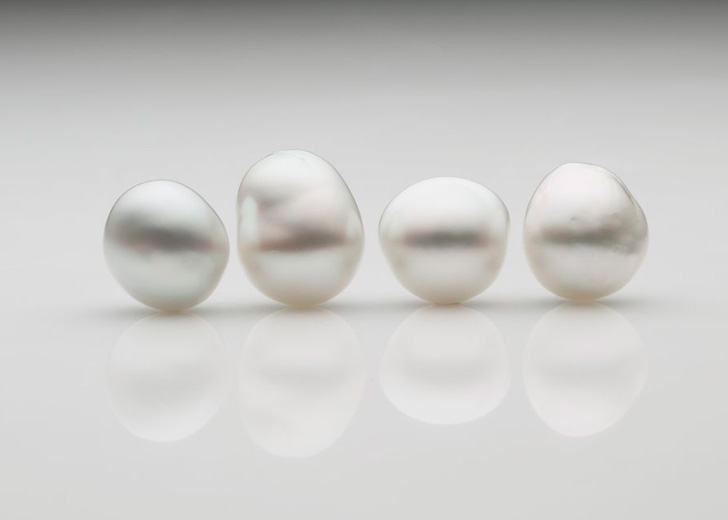Paspaley's rare gems

Paspaley gems
Large, beautiful and flawless natural saltwater pearls are so rare that it is almost a miracle that any are discovered. This is something that Paspaley, the world’s leading source of natural and cultured South Sea pearls, knows very well.
The Allure of Pearls
Paspaley is the custodian of some of the world’s most extraordinary natural pearls, several of which were showcased at “The Allure of Pearls” exhibition organised and hosted by the Smithsonian National Museum of Natural History in 2005. Paspaley presented two drop-shaped pearls weighing 18.8 carats each, measuring 11.8mm by 18mm and 11.2mm by 19.3mm respectively. The 12-piece collection assembled the world’s most famous and valuable pearls; including the Paspaley pearl, the Hope Pearl, the Pearl of Kuwait and La Peregrina - the magnificent pearl formerly owned by Elizabeth Taylor recently sold by Christies for a record USD$11.8 million
The Paspaley Pearl is a gem quality round pearl weighing 60.80 carats and was the only cultured pearl included in the exhibition.
Perhaps the finest South Sea pearl (either natural or cultured) ever discovered, the Paspaley Pearl was harvested in 2003 at one of the company’s pearl farms on the North Australian Kimberley Coast. An exquisite and rare gem with intense lustre and a strong pink overtone, the Paspaley Pearl is perfectly round and measures more than 20 millimetres in diameter. Paspaley has produced round pearls larger than than 23mm but never with the same combination of size, shape and beauty. It is this due to this rare combination that it has become known as ‘The Pearl of Pearls’.
Paspaley Natural Pearls
Paspaley is a family company that has been fishing for wild South Sea pearl oysters (Pinctada maxima) for more than 75 years; long before the commencement of cultured pearling in Australia. For the last 30 years, Paspaley has been the world’s leading producer of cultured South Sea pearls. The great majority of Paspaley’s cultured pearl production is still derived from wild oysters fished from the pearling beds of Western Australian. Today, Paspaley is the world’s largest fisher of wild pearl oysters, with 40 professional divers employed to catch the company’s quota of 300,000 to 400,000 oysters per annum. It is therefore unsurprising that despite their exceptional rarity Paspaley occasionally discovers important natural pearls to this day as the result of their substantial wild-oyster fishing activities. Australia is the last region that still depends on wild oysters for its South Sea pearl production.
Extraordinary gems
Paspaley has developed procedures to ensure that natural pearls found during the first inspection of the wild shell on the pearling grounds are carefully collected. This process occurs prior to the pearl-culturing operation and several months prior to the oysters being transported to pearl-culture farms.
Only a small percentage of wild South Sea pearl oysters can be expected to yield a natural pearl but the overwhelming majority of these are very small or of indifferent quality. Natural pearls in larger sizes are extraordinarily rare, with fewer than one in 10,000 oysters producing a pearl of fine quality.